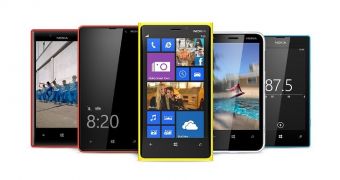Windows Phone fans rejoice, as Microsoft is expected to launch not one, but two high-end Windows Phone handsets featuring the company’s mysterious 3D Touch UI.
The folks over at Neowin have been tipped on the Microsoft’s upcoming Windows Phone roadmap and it looks like it contains two 3D Touch phones, which should be available for purchase by the end of the year.
There have been lots of rumors claiming Microsoft is working on a new 3D interface based on gestures and touch support for Windows Phone platform and that the first device to be powered by this new 3D Touch UI is called Nokia McLaren.
Obviously, this is just a codename, as the smartphone may be launched under a different name. The McLaren is said to pack a 5.2-inch full HD (1080p) capacitive touchscreen display and an impressive 20-megapixel PureView camera.
The smartphone will also be packed with 64GB of internal memory, but other variants with less storage will be available as well for lower prices.
It appears that Nokia McLaren will not be the only 3D Touch smartphone to be released by Microsoft this year, Neowin reports. There might be another device boasting a huge 6-inch display that is likely to go on sale later this year too.
This unannounced 6-inch phablet should replace the Lumia 1520, but other than that there are no additional details regarding its specs.
The 6-inch Lumia smartphone with 3D Touch UI might be the same device that leaked earlier today, which is said to be powered by a quad-core Qualcomm Snapdragon 801 processor. The rumored phablet should be packed with 32GB of internal memory and 2GB of RAM as well.
Microsoft will only add the 3D Touch UI to its most powerful smartphones in order to differentiate its high-end lineup from the low- and mid-end smartphones.
It appears that entry-level Windows Phones sales are far superior to flagship smartphones, especially due to the fact that Microsoft offers similar experiences on both segments.
With the new 3D Touch UI, Microsoft plans to justify the high price that Windows Phone fans will pay for these top-notch devices. Basically, Windows Phone will offer different experiences on high-end and low-end devices.
The more one will pay for a Windows Phone handset, the more immersive the experience. This might sound great in theory, but let’s see how this will work out for Microsoft on longer term. Stay tuned for more on this one.

 14 DAY TRIAL //
14 DAY TRIAL //